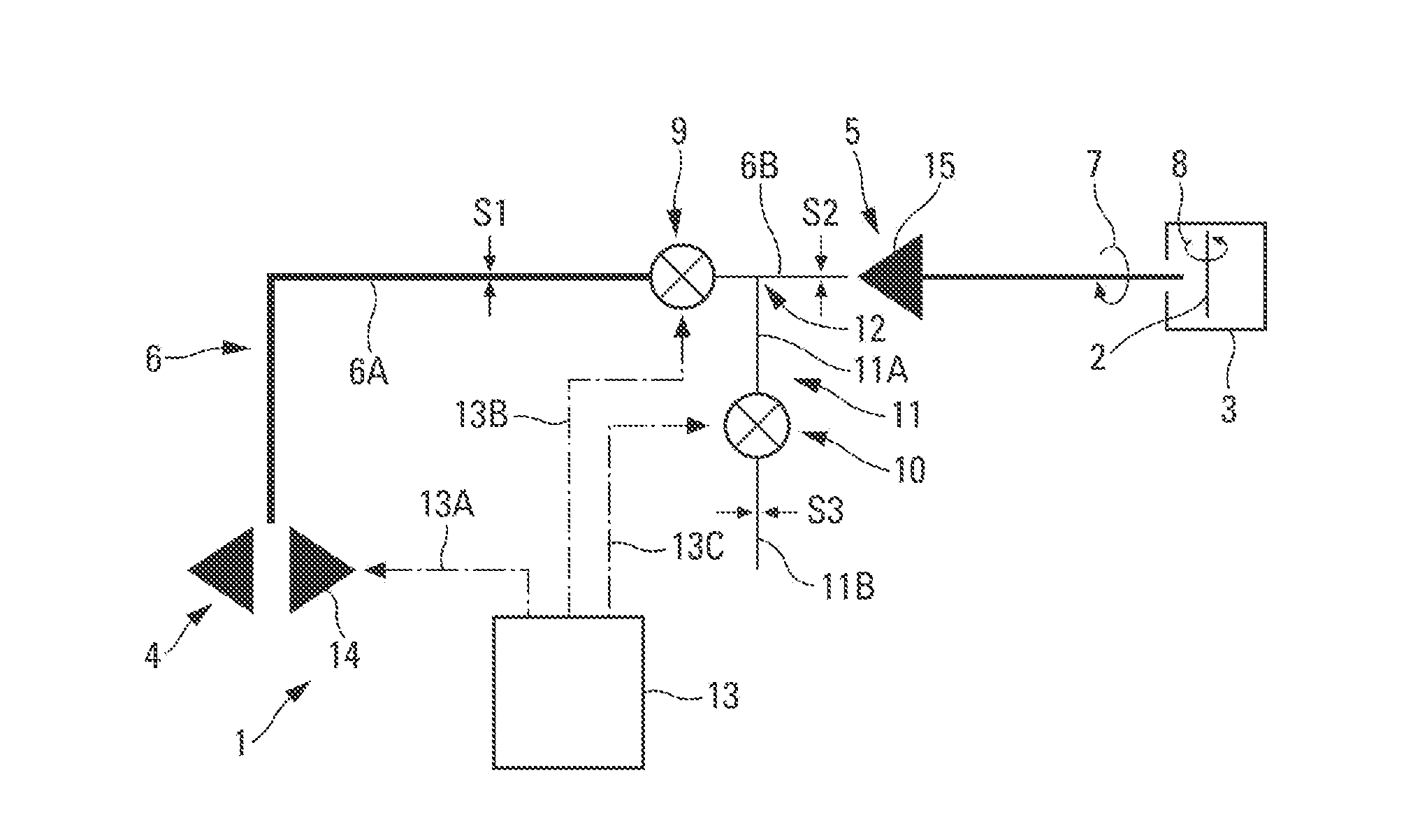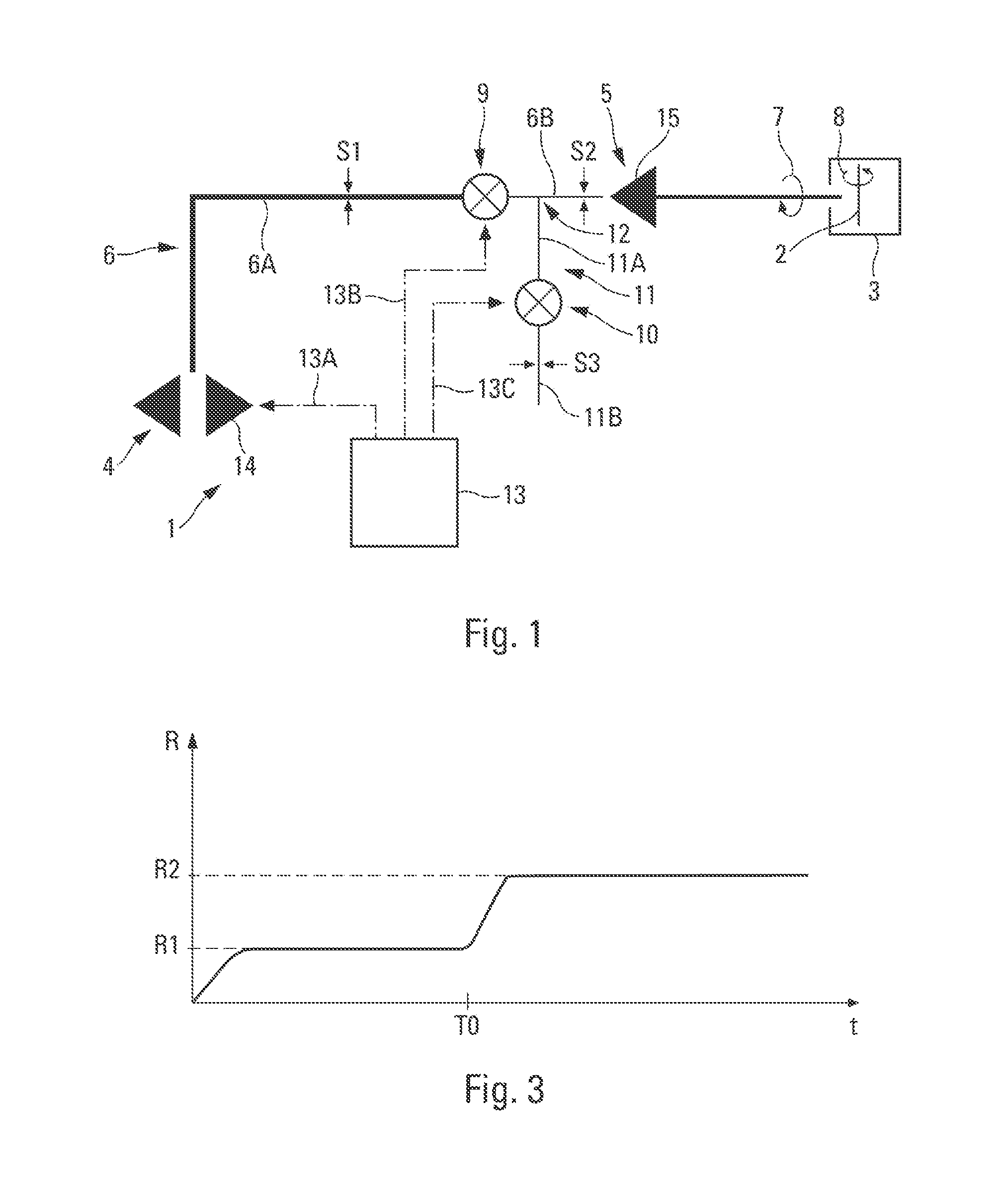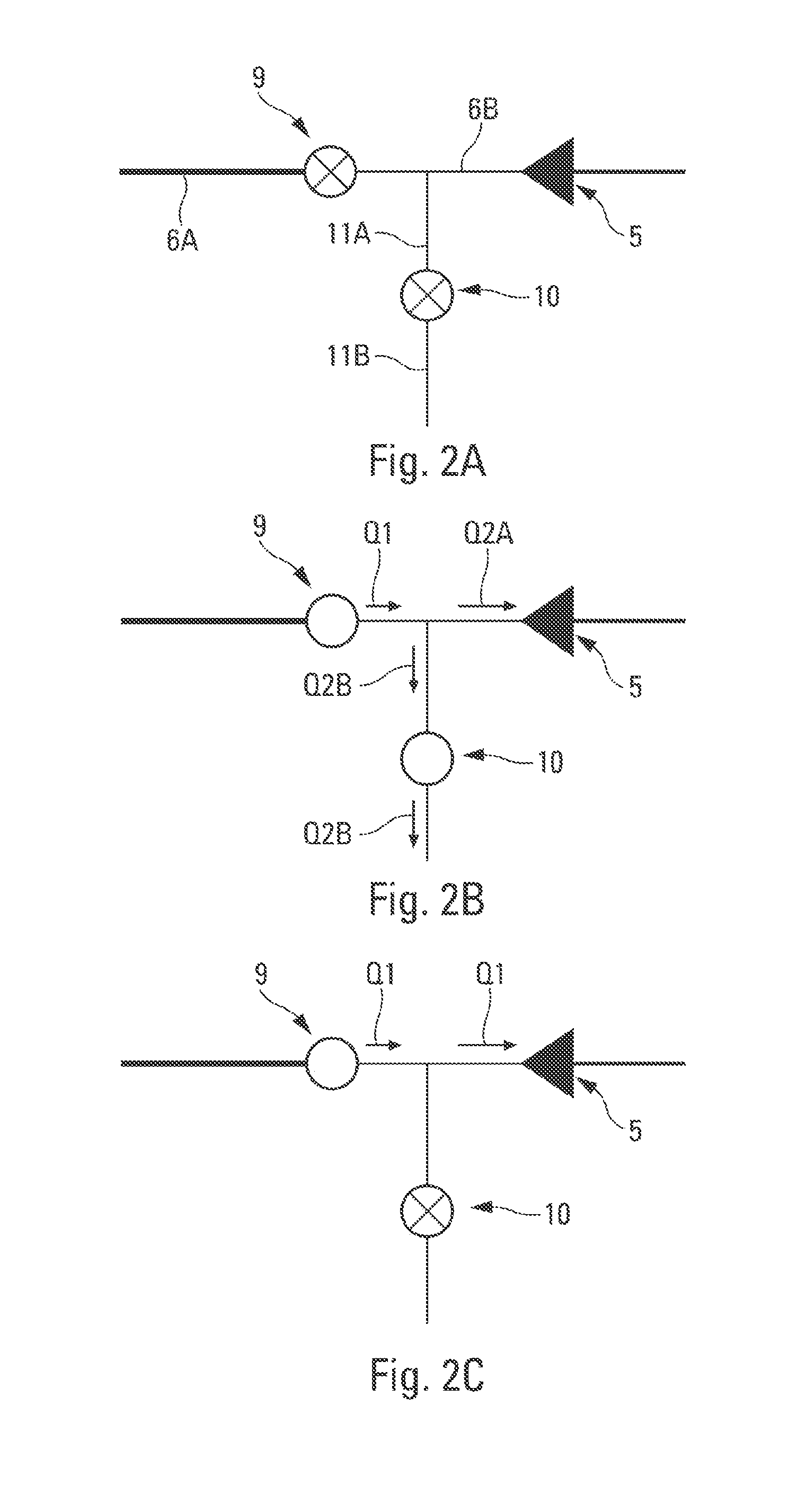System and method for spinning up a rotary element of a mechanical device, particularly a turbomachine
- Summary
- Abstract
- Description
- Claims
- Application Information
AI Technical Summary
Benefits of technology
Problems solved by technology
Method used
Image
Examples
Embodiment Construction
[0042]The system 1 illustrating the invention and depicted schematically in FIG. 1 is intended to spin up a rotary element 2 (a shaft, rotor, etc.) of a mechanical device 3.
[0043]Said system 1 may be applied to any mechanical device 3 a rotary mechanical element 2 of which is to be spun up in an environment subjected to high thermomechanical stresses capable of creating deformations in said rotary element 2, and notably to an aircraft turbomachine
[0044]Said system 1 is of the type comprising:[0045]a conventional fluid generating source 4, for example a pneumatic source or hydraulic source, capable of generating a flow of fluid (air, etc.);[0046]a drive torque generating member 5 connected to the fluid generating source 4 by a pipe 6 referred to as the main pipe capable of transmitting the fluid generated by the fluid generating source 4. Said member 5 is able to produce, when subjected to a flow of fluid, a mechanical force (illustrated by an arrow 7 in FIG. 1) allowing said rotary ...
PUM
 Login to View More
Login to View More Abstract
Description
Claims
Application Information
 Login to View More
Login to View More - R&D
- Intellectual Property
- Life Sciences
- Materials
- Tech Scout
- Unparalleled Data Quality
- Higher Quality Content
- 60% Fewer Hallucinations
Browse by: Latest US Patents, China's latest patents, Technical Efficacy Thesaurus, Application Domain, Technology Topic, Popular Technical Reports.
© 2025 PatSnap. All rights reserved.Legal|Privacy policy|Modern Slavery Act Transparency Statement|Sitemap|About US| Contact US: help@patsnap.com



